Red Mangrove is the best-known. This is the kind with the tall arching roots sticking out of the water and the one found closest to the shore.

Our mangrove forests often unappreciated, are not only instrumental in protecting our shores from the elements but also provide shelter to an incredible amount of wildlife.
A trip to the wilderness along most of the southern coast of the State is full of surprises, on land, on the air, on the water, and under the water, thanks to this unique habitat and the variety of life it supports.
Here we give you a brief introduction to this beautiful and crucial ecosystem, and the importance of its conservation.
Quick Reference: Life in The Mangroves
About the Mangrove Plant and Kinds of Mangroves
Mangroves are quite unique plants, they are able to grow in salt water by filtering the salt either through their roots or their leaves. Mostly known as the "walking" plants because of the tall roots sticking out of the water, these plants are beneficial in many ways and an indispensable resource in South Florida.
Mangroves are tropical, they are sensitive to cold temperatures. In Florida, there are three species of mangrove:

Red Mangrove

Black Mangrove
Black Mangrove grows further inland than Red Mangrove and the trunks are surrounded by roots that stick out of the soil and look like snorkels.

White Mangrove
White Mangrove unlike the other ones, does not have aerial roots and grows furthest inland. You can recognize it by the more rounded leaves.
You often see all three species growing inter-mingled creating the mangrove forests that shelter our coasts and offer protection to a great variety of wildlife.
Why are Mangrove Forests Important?
Mangroves serve many functions:

Mangroves protect our coasts
Mangroves protect our coasts from erosion from strong winds, waves and floods. Their intricate and strong root network reduce storm-surge damage and stabilizes the shoreline.
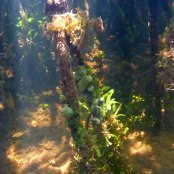
Roots serve as shelter
Mangrove roots serve as shelter and support for marine organisms like algae and oysters, which in turn serve to filter the water, keep it clear of pollutants and provide nutrients for fish and critters.

Branches serve as nesting areas
Mangrove branches serve as nesting areas for many shore birds and migratory birds which also depend on the mangroves for food and shelter. They are beautiful to watch atop the trees.
And mangroves are also valuable contributors to the food web:
The Mangrove Food Web
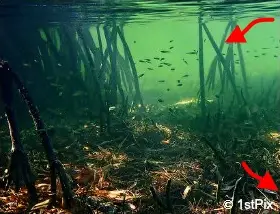
It all starts with the mangrove leaves that fall in the water and decompose, creating a rich nutrient environment for crabs, shrimp, small fish and many other marine species.
These small creatures, fish, crabs, etc. provide food for bigger fish, turtles and for the shore birds that also come to feed in the shallow waters.
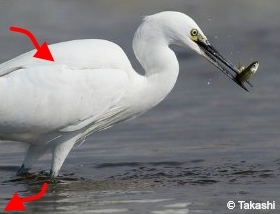
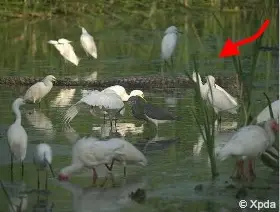
These birds and fish in turn provide food for some small mammals, i.e. racoons, which then are hunted by the larger predators, like crocodiles and humans.
And so, the mangrove is the starting point to this food chain, benefiting many species along the way.
This brings us to the next section and our favorite part when visiting the mangroves, the mangrove animals, the shore birds, and the critters big and small you find in the shallows surrounding the mangroves and beyond.
Rich Mangrove Wildlife
Our Florida mangroves support a great variety of species, from the swamp animals roaming the wetlands, the shorebirds making their homes in the branches and taking refuge amongst the roots, and tons of marine species big and small that thrive along the mangrove coastline and muddy flats supported by the nutrient rich waters.
These links will bring you to some of the most often seen animals in this mangrove wilderness:
On Land:
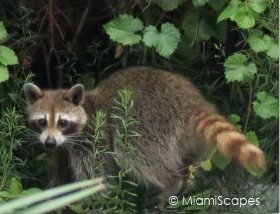
The swamp animals
Many species find shelter around the mangrove swamps, which provide protection and sources of food. We often see raccoons and iguanas. More seldom, the American Crocodile sometimes makes a presence at the Flamingo area of Everglades Park. Here's more...
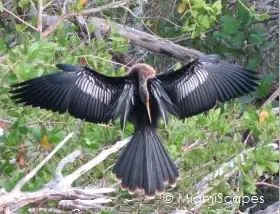
Migrating and Shore Birds
Waterbirds fish in the swampy shallows of the mangrove coastlines, migrating birds build nests in the branches, and often you can see pelicans water-bombing and looking for prey. Winter or the dry season is the best time for birdwatching. Here's more...
Marine Life:
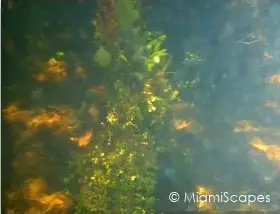
Algae and Grasses
A variety of algae and other organisms attach to the roots of the mangroves. They serve as filters, cleaning up pollutants and trapping nutrients which in turn provide sustenance to small critters like crabs, shrimp and oysters. Here's more...
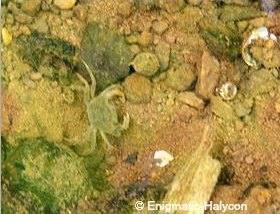
Little Critters
Many small critters live off this nutrient rich waters, you can look in the mangrove roots for attached corals, tunicates and clams, in the sandy bottom or in between the seagrasses for crabs, hermit crabs, sponges, etc. Here's more...
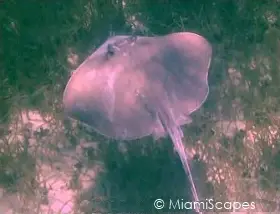
Bigger Critters
And as you swim away from the shallows, all sorts of marine life await... barracudas and snook dart in front of you, stingrays glide by, perhaps even a nurse shark or a manatee... Here's more...

Tropical Fish
Even though you are more likely to find beautiful tropical fish at the coral reefs offshore, occasionally we also see some of the colorful specimens close to the mangrove waters. Here's more...
Where and How to see and enjoy the Mangrove Forests and their Wildlife?
Luckily for our Miami visitors, the nature lovers, birdwatchers, outdoor enthusiasts, there are many places where you can enjoy this rich habitat:
By kayak or canoe
Great chances to see shorebirds on the muddy flats or on tree branches and many of the marine life and big critters swimming around, like manatees and rays.
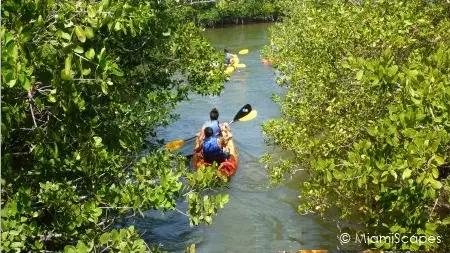
Where? These spots have canoe and kayak rentals available and many trails along the mangrove coast, long and short, some also have Eco Tours available for all ages and levels of experience
- Biscayne National Park
- John Pennekamp State Park
- Crandon Park in Key Biscayne
- Oleta River State Park
- Everglades National Park at Flamingo, also good for seeing the elusive American crocodile
Strolling the trails and boardwalks along the water
For the more sedate and if you don't want to get wet, then a stroll along one of the many trails and elevated boardwalks bring you close to the wildlife. We have seen many of the waterbirds along the shores, racoons and iguanas among the tree branches, manatees coming up for air...
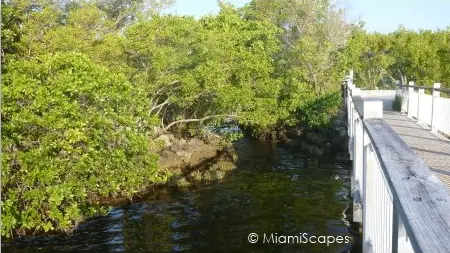
Where? We really enjoy the nature trails and boardwalks at:
Biking along the Nature Trails
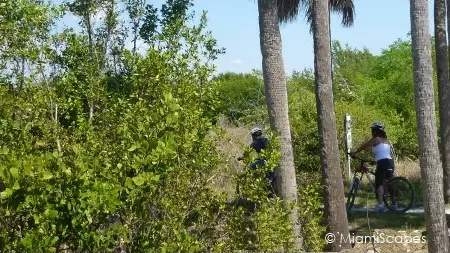
Where? Biking the nature trails with convenient rentals at:
Mangrove Backcountry Boat Tours
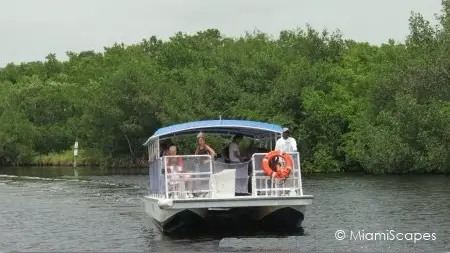
The Mangrove Backcountry Tour at Everglades National Park is led by a ranger or naturalist, and besides learning about the wildlife in the mangroves, you also learn much about the different ecosystems in the park.
Swimming and snorkeling along the shore and shallows
The intricate root network of the mangroves serve to host many marine organisms that cling to these props and take advantage of the nutrient rich waters to thrive.
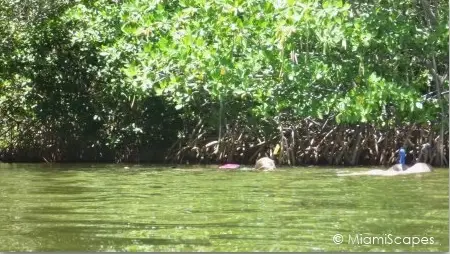
Snorkeling close to the shore and the mangrove roots, although a rather murky experience, gives you a chance to see many little critters and marine life. Look beyond the roots, along the sandy bottom and the seagrass, and a bit further where you see plenty of fish darting about, and perhaps a ray gliding by...
Where? Snorkeling off the beach at John Pennekamp Park
Each experience will give you a different glimpse of what the mangrove wildernes is about, if you are visiting any of these parks, take the time to explore our beautiful mangrove coastline!
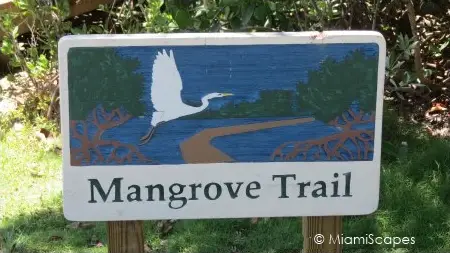
Most Popular Everglades Excursions
Book with confidence! Free cancellation: Cancel up to 24 hours in advance to receive a full refund
















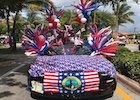













Send a Tip!
Got something to share? Let us know!